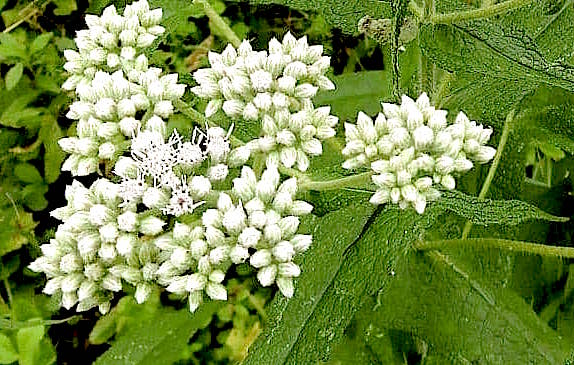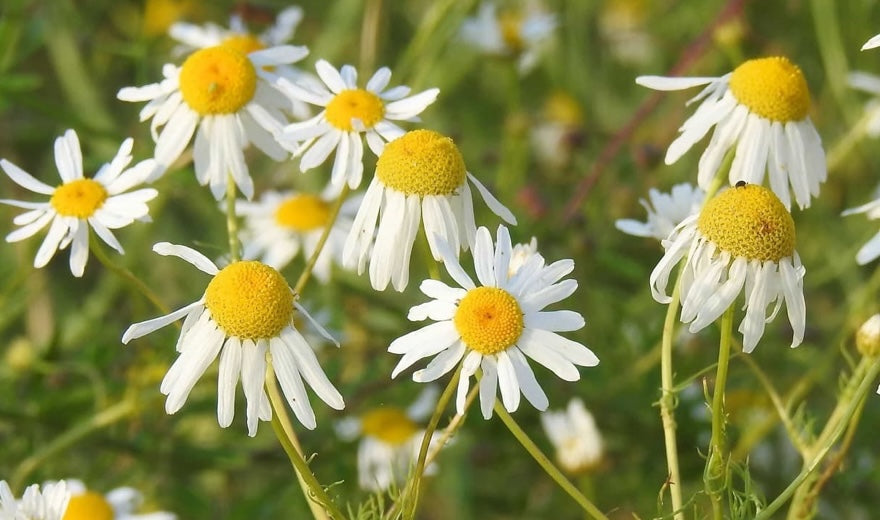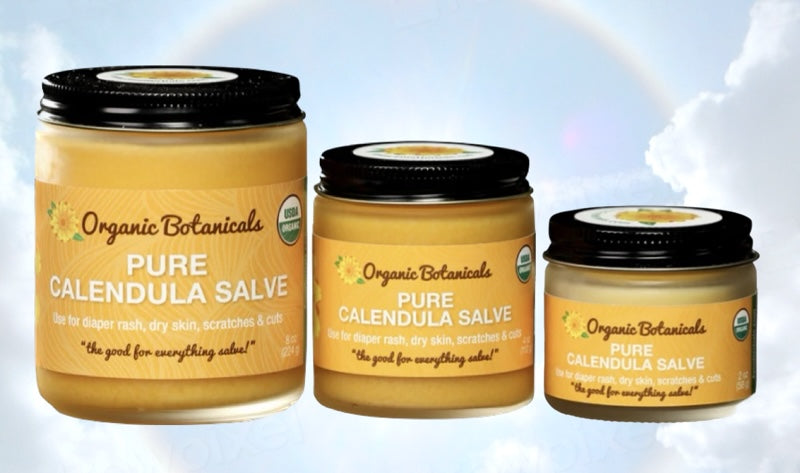Plants have a genius for self-defense, and they can help protect us

Plants have a genius for self-defense, and they can help protect us
The underlying magic of herbal medicine reflects the basic unity of Earth’s life forms.
People, animals, and plants all share a planet that teems with microscopic life forms, including bacteria, viruses, fungi, and parasites. The effects of these tiny critters range in various degrees from nurturing, to neutral, to harmful.
Plants offer us a potentially enormous range of compounds, developed over millions of years in order to defend themselves against disease-causing microorganisms, and to control oxidative and inflammatory processes that impair health.
Over the millennia of our existence, humans have learned to use certain plants, rich in these protective chemicals, to aid our immune defenses and combat invasive microbes, and to avoid other plants whose defensive chemistry is toxic to our systems.
Sometimes the protective effects and the toxicity are closely linked. If you look through old herbal medicine books, you’ll find many powerful plants that are currently considered unsafe, but were commonly used by healers until fairly recently.
Today’s herbal healing aims to focus on plant allies that are both safe and effective. We benefit from a globally connected culture where plant lore from all parts of the world is increasingly shared. Medicinal plants from many regional healing traditions have become widely available, and a great deal of information about these plants, including many research studies, can be readily accessed. (Go to the National Institute of Health’s PubMed website and enter the name of an herb in the search box—you may be amazed at what comes up!)
At this time, little can be stated with certainty about the SARS-type coronavirus known as Covid-19, so these notes are general in nature, and no specific claims are made or implied here.
Many official statements insist that there is no treatment known to be effective for coping with colds or flus, including the current pandemic. Yet there is a wealth of information, from both traditional healing methods and research studies, that emphatically suggests otherwise. Those of us who seek positive steps to take toward our own and our families’ health need to sift through this information with caution and discernment. 
Let’s get slightly technical for a minute about some of the ways that herbs and essential oils can help our bodies cope with viral threats. Many of us interact with computers frequently, but don’t have an everyday need to deal with the intricacies of cell biology. Our bodies manifest innate abilities that keep most of us healthy, most of the time, requiring no special knowledge or effort!
Recall that a computer virus is a little bit of software code, designed to invade your computer or smartphone and take advantage of the device’s resources to spread copies of itself into other machines.
Similarly, a biological virus is basically just a tiny cluster of information, coded as DNA or RNA, and enclosed in a protein coat, that’s only able to reproduce and spread itself by hijacking the functional parts of cells in a larger organism, like a bacterium, plant, or animal. Multiple steps are required to carry this process out, including binding the host cell’s membrane, interfering with the cell’s defenses, and releasing new virus particles from the infected cell.
Various antiviral compounds (herbal or pharmaceutical) interfere with these actions at different places in the sequence. Since the term antiviral is often used in a general way, it’s worth emphasizing this point: “antivirals” work through specific mechanisms that may be effective against certain types of viruses but not others. For instance, a number of herbs have been shown to act against herpes viruses, which are DNA-based, and may not affect RNA viruses such as hepatitis C, influenza, and coronavirus.  Direct action against viral infection
Direct action against viral infection
This often involves blocking or impairing the virus’ ability to invade host cells, or inhibiting its replication after it has entered the cell. A recent study on Elderberry highlights this phase of its protective action. The attachment point for SARS-type coronaviruses is the ACE-2 linkage on the surface of many types of cell, including in the lungs. Some of the herbs and plant compounds that protect the ACE-2 enzyme are Licorice (pictured above), Elder, and luteolin (found in many foods, and in herbs such as Chamomile and Thyme). This is important for helping to minimize lung damage from viral infection. Ginkgo biloba and Hawthorn also help increase ACE-2 levels, which tend to decline in older people.
Some of the essential oils that appear to block various phases of viral attachment or replication in laboratory experiments include Tea Tree, Lemongrass, Eucalyptus, Thyme, Geranium, Lavender, Clove, and Patchouli.
Optimizing immune responses
Broadly speaking, conventional medicine has tended to focus more on fighting pathogens, while alternative approaches often look at bolstering resistance.This is a realm where herbal options like Astragalus, Echinacea, and medicinal mushrooms such as Reishi, have become well-known. Stimulating T-cell production with herbs such as Licorice, Elder, and zinc, is one element of strengthening the body’s defensive efforts. 
The inflammation that can accompany immune reactions is generally the source of the symptoms that come with infections, and can include both life-saving and life-threatening elements. Astragalus (pictured, right), Dong Quai, and Boneset are among herbs that protect the body by reducing levels of some of the most harmful inflammatory compounds released during advanced stages of viral infections.
Pneumonia, typically the most serious complication of viral respiratory infections like the current epidemic, is linked to inflammatory damage to the ciliated cells that move mucus out of the lungs. Plants containing berberine, such as Oregon Grape, Yerba Mansa, and California Poppy, may help to reduce this damage. The lymphatic system, integral to immune function, can also be threatened in severe cases, and lymph- and spleen-protecting herbs like Poke Root may be indicated.
Indirect enhancement of immunity
Overall immune functioning is impaired by stress reactions and lack of sleep, so herbs and essential oils that alleviate anxiety and insomnia, and facilitate positive emotional states, can play a role in maintaining health and resisting infection. This is an area where an individualized approach is essential, as the possible variables in plant-person interactions are limitless.
Symptom relief
Fever often accompanies infection with this virus. Up to the point where extremely high temperatures may begin to cause injury, it is best considered a helpful part of the body’s healing response, as viruses are very sensitive to heat, and antibody production is increased. In the famous 1918 flu pandemic, a great many of the pneumonia deaths were likely due to the overuse of fever-reducing medicines such as aspirin. (Simply applying adequate heat to the nasal cavities and sinuses, buffered with moisture—think sauna bath!—is an intriguing natural approach to inactivating upper respiratory viral infections.)
Dehydration due to fever should be avoided, and special concerns may arise for cardiac patients whose arterial plaques could be destabilized at high temperatures.  Early stages of fever are often accompanied by chills, and diaphoretic herbs that increase circulation, including Ginger (pictured at left), Cinnamon, and Osha Root, can help. With mid-range fevers, 102-4º F, herbalists may consider cooling and relaxing herbs like mints, Yarrow, Boneset, Lemon Verbena, Lemon Balm, Wild Yam, Catnip, Lobelia, or Skullcap. Note that Astragalus, berberine-containing herbs, and others given to reduce heat, are not recommended during fevers.
Early stages of fever are often accompanied by chills, and diaphoretic herbs that increase circulation, including Ginger (pictured at left), Cinnamon, and Osha Root, can help. With mid-range fevers, 102-4º F, herbalists may consider cooling and relaxing herbs like mints, Yarrow, Boneset, Lemon Verbena, Lemon Balm, Wild Yam, Catnip, Lobelia, or Skullcap. Note that Astragalus, berberine-containing herbs, and others given to reduce heat, are not recommended during fevers.
Many herbs already mentioned, such as Thyme, Licorice, Lobelia, and Catnip, can be helpful for the dry, irritable cough that is often described with the virus. Many others are worth considering, including Coltsfoot, Marshmallow, Mullein Flowers, and Slippery Elm.
We have so much to learn in these times. Information resources are bewilderingly abundant… be curious and inquisitive, be skeptical, be careful, and be kind!
Grateful acknowledgment is made to some of the more credible sources of relevant information on antiviral herbs and essential oils we’ve found in recent days, including Paul Bergner ND, Stephen Harrod Buhner, and Shannon Becker PhD.
Also in News

10 Fun Facts about Chamomile - The Wonder Herb
Chamomile is arguably one of the most familiar and commonly used herbs. Here's 10 interesting facts about this wonderfully diverse herb.


